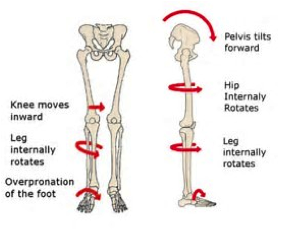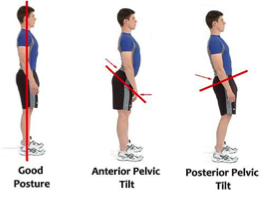Stability – Part 2 – The Pelvis
January 18, 2018

Stability Part 2 – Pelvic stability
 In the first blog on stability (click here) we spoke about the core and all the components that make up the core. We spoke about how the core acts as the stabiliser of the spine and trunk, and its importance as a point of transition of forces from the lower limbs to the upper limbs, and vice versa. This is an integral to ensure correct kinetic chain mechanics, and prevention of increased loading and injury to the spine….
In the first blog on stability (click here) we spoke about the core and all the components that make up the core. We spoke about how the core acts as the stabiliser of the spine and trunk, and its importance as a point of transition of forces from the lower limbs to the upper limbs, and vice versa. This is an integral to ensure correct kinetic chain mechanics, and prevention of increased loading and injury to the spine….
BUT WAIT THERE IS MORE…
Over the last 20 years the profession of sports rehabilitation has undergone a trend away from traditional, isolated assessment and strengthening. We have moved toward an integrated, functional, movement‐based approach. Being functional is of utmost importance to excellent and comprehensive rehabilitation.
Therefore focusing on the core alone is not the answer, instead we need to look at the pelvis and lumbar spine as a whole in functional movement patterns to ensure optimal positioning and loading.
What is Pelvic stability?
Pelvic Stabilisation is geared toward improving the function and strength of the pelvis and hip regions. Inefficient pelvic and hip stabilisation can lead to faulty movement patterns as listed below (seen in the pictures alongside):
- Trendelenburg (drop hip)
- Rotation and side flexion of the spine
- Internal rotation of the lower limb
- Knocked knees
- Foot pronation
- Excessive forward or backward pelvic tilt
These changes in body alignment can lead to problems in the lower back, hip, knee and ankle.

How does the Pelvis become inefficient in the first place?
There are many reasons as to why we see weakness in the pelvis:
- Sedentary lifestyle resulting in increased sitting, and less activity
- Sitting and standing in poor postures places the glutes in less optimal positions for activation
- Pain in the lower back, hip and knee region can lead to muscle inhibition in the pelvis area
- Pregnancy/ post-child birth
 When your body forgets how to properly activate the gluteal muscles, you lose the ability to move your hips through their full range of motion and compensatory recruitment of other muscles. Ultimately this means that other back and hip muscles tend to tighten up to try and stabilise your wobbly hip. This leads to overactivity of the wrong muscles which alters movement patterns and results in pain and injury.
When your body forgets how to properly activate the gluteal muscles, you lose the ability to move your hips through their full range of motion and compensatory recruitment of other muscles. Ultimately this means that other back and hip muscles tend to tighten up to try and stabilise your wobbly hip. This leads to overactivity of the wrong muscles which alters movement patterns and results in pain and injury.
Remember…..
The body works as whole and when certain body regions are inefficient, the body will find a way to make the movement happen using another muscle or joint in a way that was not intended. If your not feeling 100% it is likely that your body is already ‘cheating’ and not moving the way it should. A full assessment by your Physiotherapist will identify and optimise your movement and performance, as well as prevent injury and pain.
Written By: Nicole Pereira (Physiotherapist & Pilates Instructor, Nelson Bay Physiotherapy & Sports Injury Centre)
References
Phrompaet, S., Paungmali, A., Pirunsan, U., & Sitilertpisan, P. (2011). Effects of Pilates Training on Lumbo-Pelvic Stability and Flexibility. Asian Journal of Sports Medicine, 2(1). doi:10.5812/asjsm.34822In‑text: (Shamsi, Sarrafzadeh, & Jamshidi, 2014, p. xx)
Shamsi, M. B., Sarrafzadeh, J., & Jamshidi, A. (2014). Comparing core stability and traditional trunk exercise on chronic low back pain patients using three functional lumbopelvic stability tests. Physiotherapy Theory and Practice, 31(2), 89-98. doi:10.3109/09593985.2014.959144
